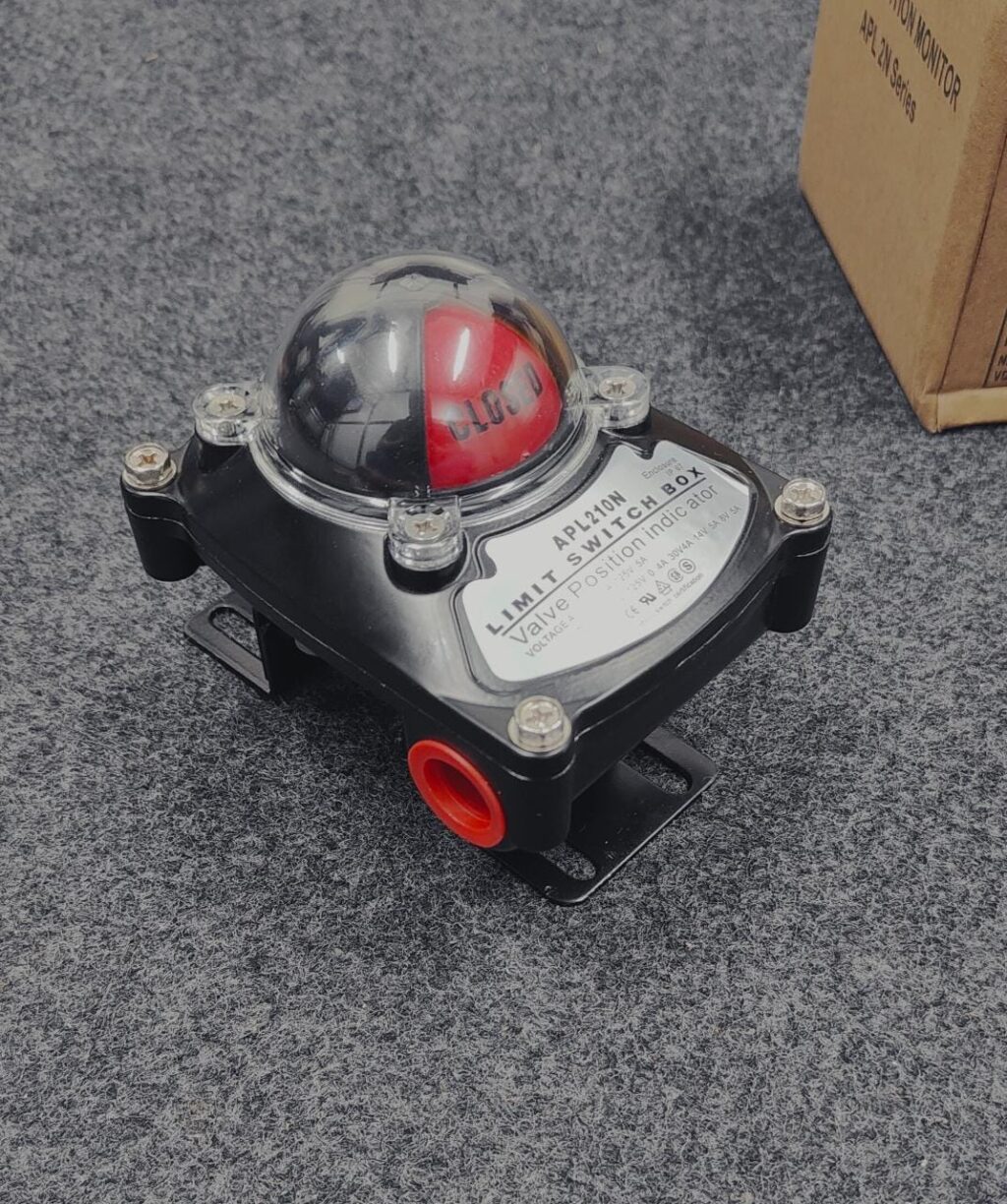
In today’s fast-paced industrial environment, automation and control are key to operational efficiency and safety. Among the essential components in this ecosystem, industrial limit switches play a critical role—particularly in valve actuation systems and automated control circuits. These electromechanical devices are designed to detect the position or movement of a component (such as a valve or actuator) and signal a control system accordingly.
Whether used in oil and gas, chemical processing, water treatment, or power generation, limit switches provide accurate, real-time feedback on valve position, contributing to automated, error-free operations.
What is an Industrial Limit Switch?
An industrial limit switch is an electromechanical device that gets actuated by physical contact or motion. It is used to detect the presence, absence, or position of a mechanical component—most commonly in valve and actuator systems.
When the moving part (like a valve stem or actuator arm) reaches a predefined point, the switch toggles, sending a signal to the control system (PLC, SCADA, DCS). This signal informs the system that the device is either fully open, fully closed, or in between, allowing the controller to take appropriate action.
Applications in Valve Automation
Limit switches are indispensable in automated valve systems, where accurate valve position monitoring is crucial. They are used across different valve types:
- Ball Valves
- Butterfly Valves
- Gate Valves
- Globe Valves
- Knife Gate Valves
- Plug Valves
Each valve, when operated manually, pneumatically, or electrically, benefits from limit switches to provide feedback on open/closed status or intermediate positioning.
Common use cases include:
- Open/Close Position Feedback for SCADA or PLC control
- Safety Interlock systems to avoid overtravel or unintended operation
- Remote Monitoring of valve status in hazardous or distant areas
- Alarm Triggers if a valve does not reach the intended position
Integration with Automation Control Systems
Modern automation systems rely heavily on sensors and limit switches to maintain precision and control. Limit switches interface seamlessly with:
- Programmable Logic Controllers (PLCs)
- Distributed Control Systems (DCS)
- Remote Terminal Units (RTUs)
- Human Machine Interfaces (HMIs)
- Industrial Internet of Things (IIoT) platforms
In most systems, the limit switch functions as a binary input. A change in state (on/off) is interpreted by the control logic to execute operations like:
- Initiating next process steps
- Stopping the actuator motor
- Logging data for diagnostics or performance tracking
- Triggering safety alarms or emergency shutdowns
Types of Industrial Limit Switches
Depending on the application and environment, the following types of limit switches are used:
Mechanical Limit Switches
These are traditional contact-based switches that use a physical actuator (lever, plunger, roller) to detect movement. Widely used due to their simplicity and cost-effectiveness.
Proximity Limit Switches
These use magnetic, inductive, or capacitive sensing instead of direct contact. Ideal for applications where non-contact detection is preferred, such as in corrosive or hazardous environments.
Rotary Limit Switches
Used in actuators or rotary valves where motion is angular. These switches detect rotation limits and provide position feedback.
Position Indicator Limit Switch Boxes
These are enclosures that integrate dual limit switches with mechanical visual indicators and terminal connections—commonly used in valve automation packages.
Key Features and Benefits
High Reliability
Industrial-grade limit switches are built to withstand harsh environments, including dust, water, vibration, and chemicals. Many come with IP67/IP68-rated enclosures.
Accurate Position Detection
They provide precise position sensing, ensuring accurate valve open/close feedback. This reduces manual errors and improves control.
Durable & Long-Lasting
These devices are designed for long life cycles (millions of operations), even in heavy-duty and hazardous applications.
Fail-Safe Operation
Limit switches help prevent valve overtravel or unintended motion, offering built-in safety assurance.
Easy Integration
Most limit switches are plug-and-play with standard wiring to control panels or PLCs. Universal mounting brackets simplify field installation.
Industries That Rely on Limit Switches
- Oil & Gas – For upstream, midstream, and downstream valve control
- Power Plants – Steam, gas, nuclear plants for valve interlocks and control
- Pharmaceutical – Cleanroom valves where precision and hygiene are critical
- Water Treatment – Automated water distribution and sewage control
- Chemical – For safety monitoring in corrosive process lines
- HVAC & Building Automation – Duct and damper valve monitoring
- Food Processing – Sanitary valves with limit switches for automation
Conclusion
Industrial limit switches are a vital part of modern valve automation and control systems. Their role in detecting valve position, providing safety interlocks, and enabling seamless integration with automation platforms makes them essential for any process industry. Whether you’re automating a chemical plant, a water treatment facility, or a power station, choosing the right limit switch ensures operational reliability, safety, and efficiency. From rugged mechanical switches to smart, sensor-based proximity models, the right solution depends on your environmental conditions, valve types, and control requirements. Investing in high-quality, industrial-grade limit switches not only improves performance but also minimizes downtime and maintenance costs.





